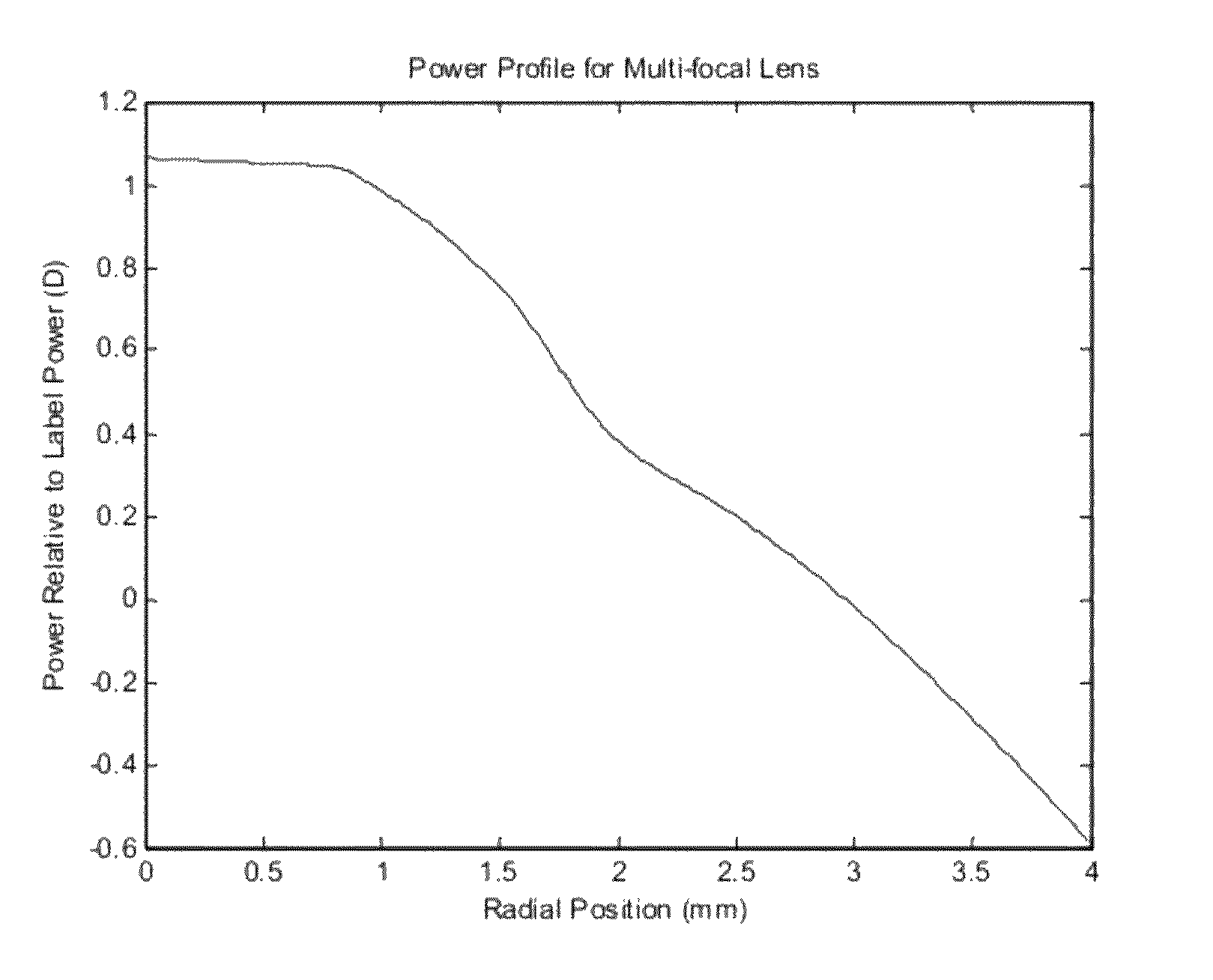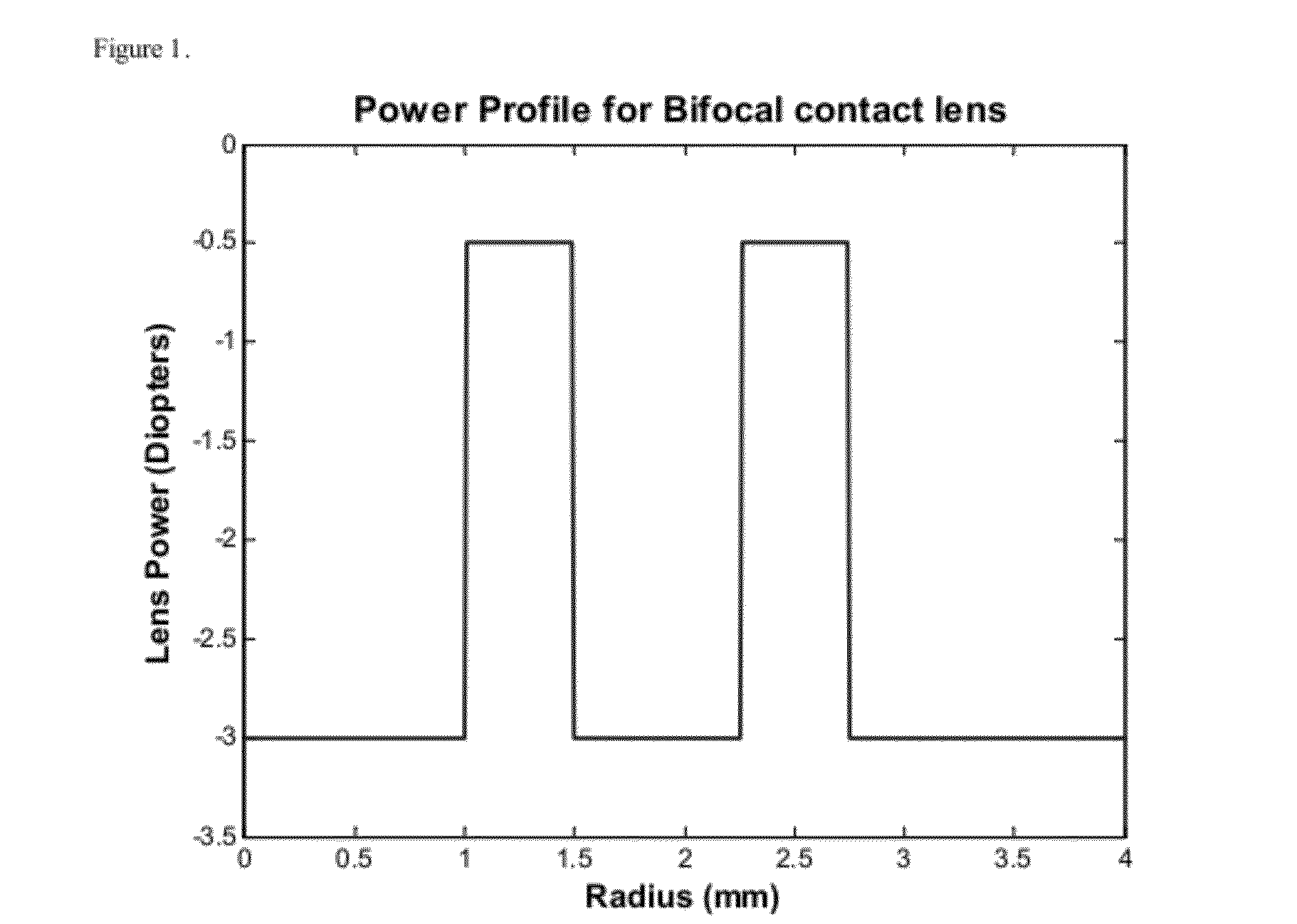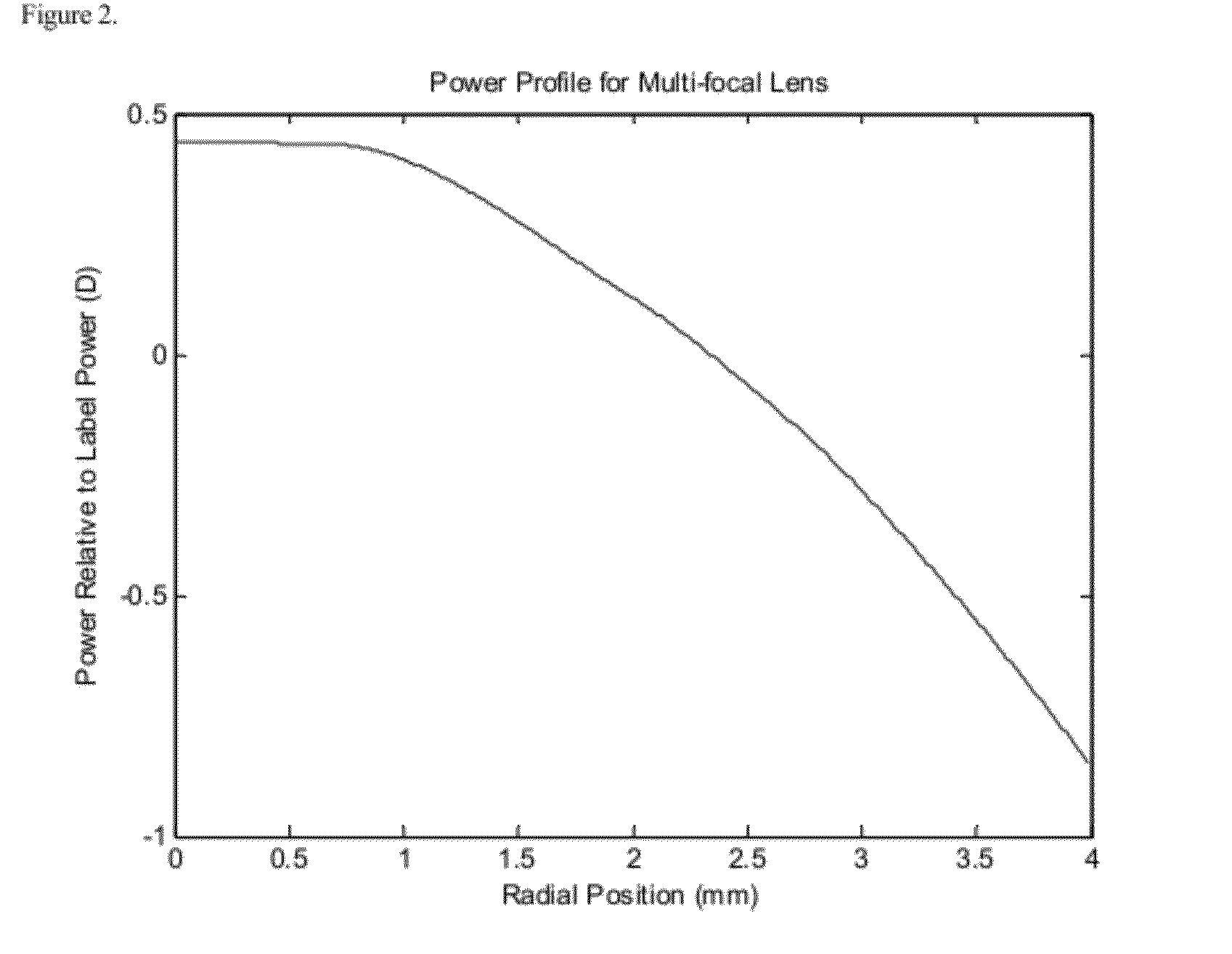Lens systems for presbyopia
a technology for presbyopia and lenses, applied in the field of ophthalmic lenses, can solve the problems of loss of stereopsis, bending of natural lenses, and the ability of eyes to accommodate, and the loss of natural lenses
- Summary
- Abstract
- Description
- Claims
- Application Information
AI Technical Summary
Benefits of technology
Problems solved by technology
Method used
Image
Examples
example 1
[0067]A system of lenses is made up across a range of distance corrective powers and three add powers. Each lens has radial zones of varying power. The central zone has power that is more plus or “near” so this lens has a “center near” design. The lenses are designated as “A”, “B”, and “C” and individually provide progressively better near vision performance. The power profiles for the exemplary −3.0 D lens of this system of lenses are shown in FIG. 7.
[0068]The following table shows by add need (+0.75 to +2.50 D) the lens pairs that meet the criteria for the family of lenses of the invention. The AA pair (an A lens in each of the two eyes) meets the above requirements for 0.75, 1.0, and 1.25 D add requirement. The AB pair does not meet the requirement for any add powers. For 1.50, 1.75, and 2.00 D add requirement either the BB or the BC pair meets the requirements. For high adds the BC pair is required. There is a pair of lenses that meets the above constraints for each add requirem...
example 2
[0069]A system of lenses is made up across a range of distance corrective powers and three add powers. The central zone has power that is more plus or “near” and the optic zone is a continuous asphere, so lens is a “center near continuous asphere” design. The lenses are designated as “A”, “B”, and “C” and provide progressively better near vision performance. The power profiles for the exemplary −3.00 D lenes are shown in FIGS. 2, 3 and 4.
[0070]The following table shows the pairs by add that meet the criteria for the family of lenses of the invention. There is at least one pair of lenses that meets the requirement for all add powers.
Continuous Asphere0.7511.251.51.7522.252.5AA+++ABBB+++BC++
example 3
[0071]A system of lenses is made up across a range of distance corrective powers and three add powers. In this case the central zone has more minus power than the adjacent zone so the lens has a “center distance” ring design. The lenses are designated as “A”, “B”, and “C” and provide progressively better near vision performance The power profiles for the exemplary −3.00 D lenses are shown in FIG. 8. The following table shows the pairs by add that meet the above constraints. There is at least one pair of lenses that meets the requirement for all add powers.
Center Distance0.7511.251.51.7522.252.5AA+++AB+BB+++BC+++
PUM
 Login to View More
Login to View More Abstract
Description
Claims
Application Information
 Login to View More
Login to View More - R&D
- Intellectual Property
- Life Sciences
- Materials
- Tech Scout
- Unparalleled Data Quality
- Higher Quality Content
- 60% Fewer Hallucinations
Browse by: Latest US Patents, China's latest patents, Technical Efficacy Thesaurus, Application Domain, Technology Topic, Popular Technical Reports.
© 2025 PatSnap. All rights reserved.Legal|Privacy policy|Modern Slavery Act Transparency Statement|Sitemap|About US| Contact US: help@patsnap.com



